On the Road is a weekday feature spotlighting reader photo submissions.
From the exotic to the familiar, whether you’re traveling or in your own backyard, we would love to see the world through your eyes.
It’s Albatrossity Monday! We have two bonus OTR posts from the Sinai Trail, and finish up the week with two gorgeous parks.
(click to see the larger, non-blurry version)
Albatrossity
After leaving the San Luis Valley of Colorado and heading west, I basically drove two days across a lot of gorgeous country, without stopping to look at birds, and ended up in Monterey CA the day before a planned pelagic birding trip with Debi Shearwater and company. A bunch of birders, dosed with Dramamine, piled onto a dock in the Monterey Harbor a bit before dawn on Sunday 9/8/2019, where we were told that the trip had been cancelled due to weather (25 ft. waves and such). There were no opportunities for rebooking; there was only one more planned trip that fall, and it was already full, and none were scheduled for the next year because Debi was retiring. We got our money back, but the disappointment was profound.
Another Kansas birder, a friend of mine from Wichita, was also there, also disappointed, and wondering what to do for the day. He is a dedicated lister, and was hoping to see some species that he had not seen before, as he closed in on the magic number of 700 species seen in North America. The only other non-oceanic lifer possibility for him in the area was Mountain Quail, and that would require a trip up into the higher elevations of the coastal mountains above Carmel. It was also another potential wild goose (or quail) chase, since that is a secretive bird and never abundant, even in places where it is known to hang out. But I had a car, we had the day, and we headed up. I took the camera, but really didn’t use it for much, since my bird photography technique is to find a place, sit still for a while, and see what shows up. That’s tough to do while driving on windy dusty mountain roads, with another person around, especially one who was focused on finding a single species!
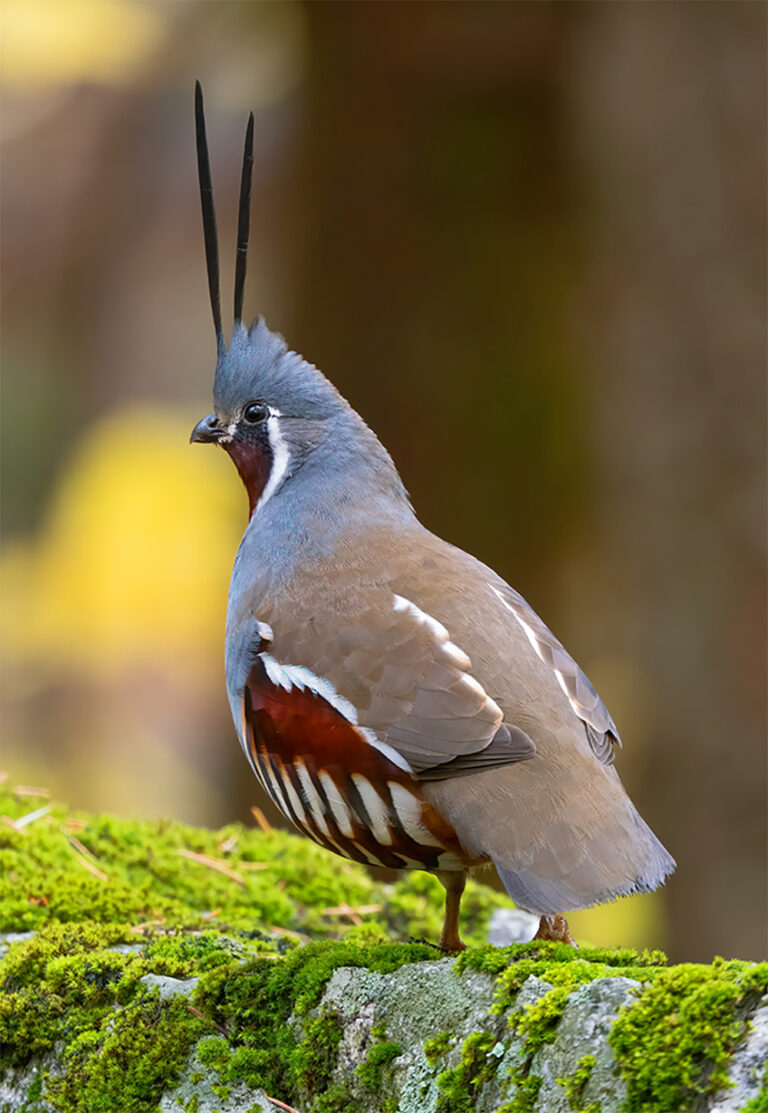
But we had a great day, saw lots of birds, and yes, we did see Mountain Quail. It was a situation that birders describe as BVD (Better View Desired), but we found some scuttling down a dusty road at an elevation of about 5000 feet in the Los Padres National Forest. No pics, but if you want to see this fabulous bird from the comfort of your chair, here is a shot taken by my long-time birding buddy, photography mentor, and bird photographer extraordinaire Mark Chappell. Thanks for giving me permission to share this shot here, Mark! It’s hard to appreciate this image unless you understand that this bird is very hard to see and even harder to photograph! Click here for larger image.
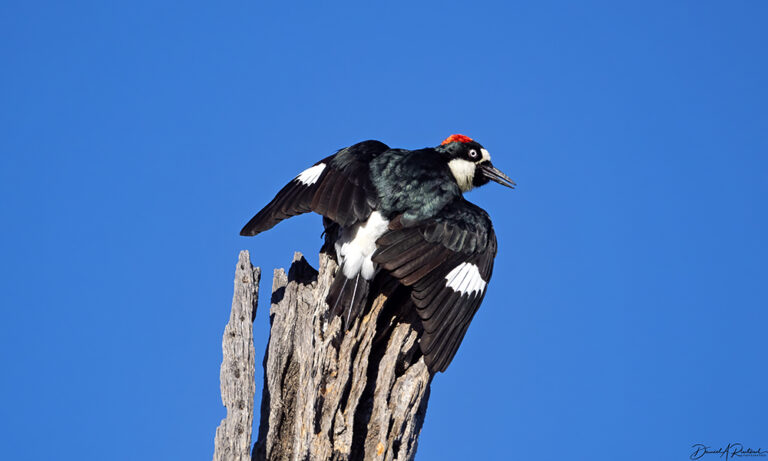
A bird that is much more common, and much more easy to photograph is the Acorn Woodpecker (Melanerpes formicivorus). Clown-faced and crazy-eyed, it might just be my favorite woodpecker! Click here for larger image.
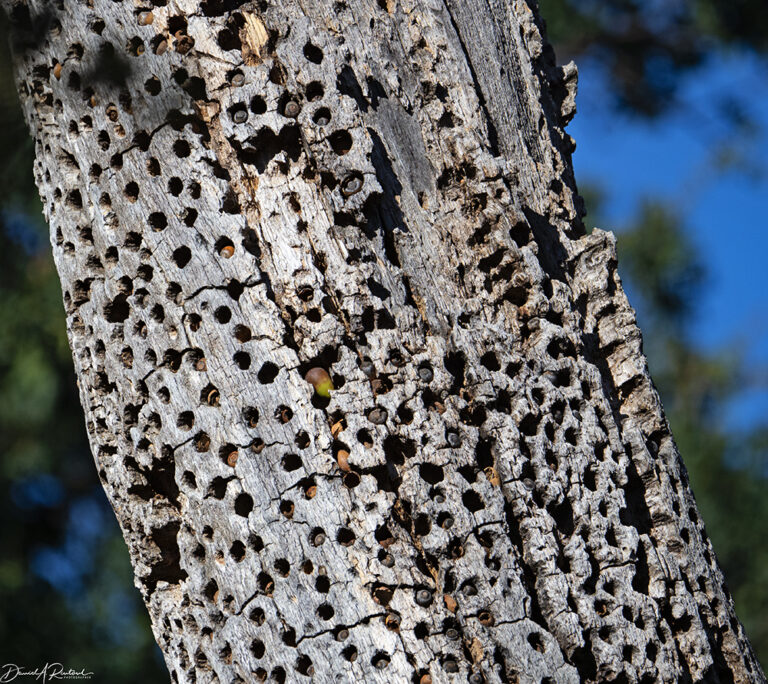
Acorn Woodpeckers are named for their interesting habit of stashing acorns in acorn-sized holes that they prepare in trees (or utility poles). These granary trees serve as a reserve food supply for many woodpeckers in a family group, and can be very impressive! Click here for larger image.
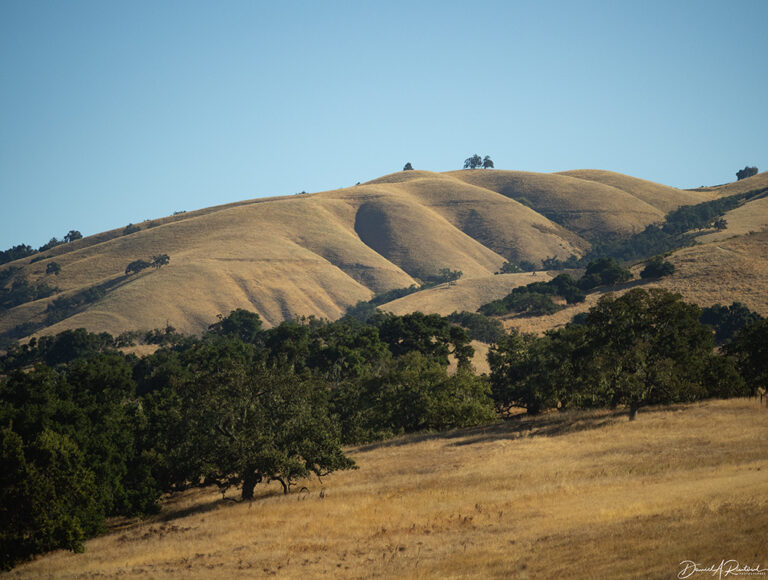
And here is a view of this part of the Central Coast of California. Hills covered in summer-blond grasses, and California Live Oaks (aka Coast Live Oak, Quercus agrifolia) lining the dry creek drainages. A spot like this is guaranteed to host many Acorn Woodpeckers! After spending 5 years in graduate school in central California, this prospect is what comes to my mind when I hear the word California. Click here for larger image.
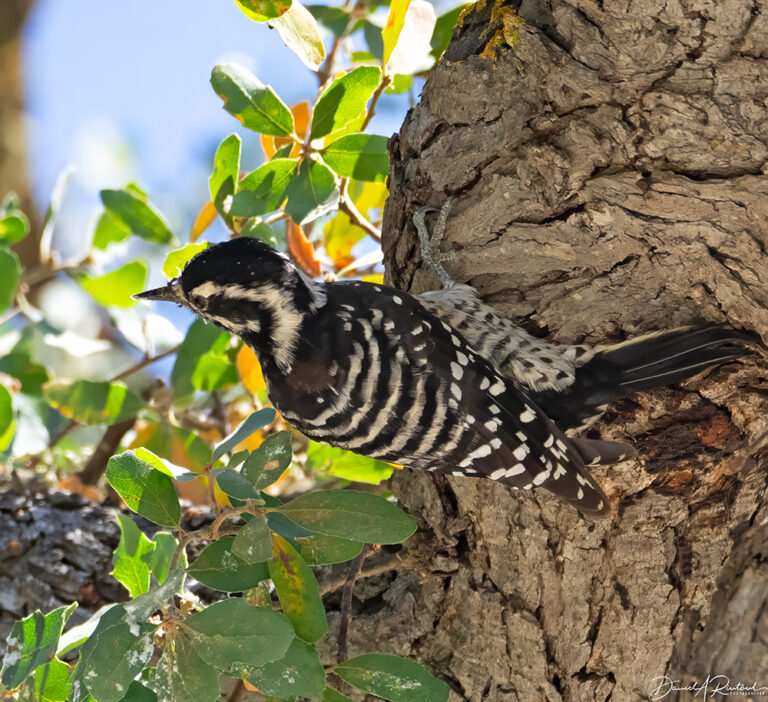
Live Oaks host lots of other birds as well. Here’s another woodpecker that is essentially a California endemic species, Nuttall’s Woodpecker (Dryobates nuttallii) hanging out in a Live Oak tree. Click here for larger image.
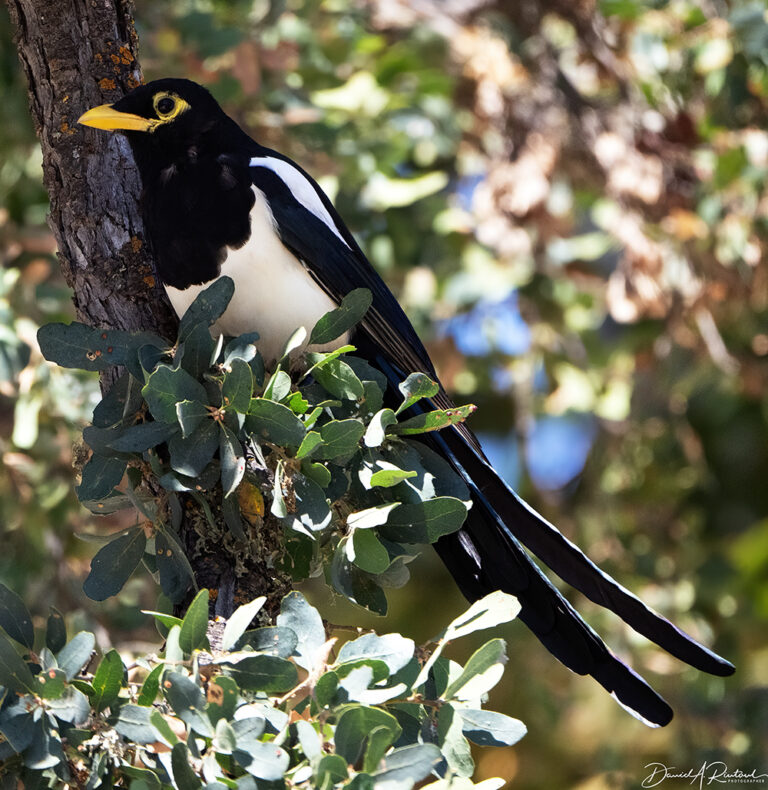
Another California endemic, this Yellow-billed Magpie (Pica nutalli) is also in a Live Oak tree. If anyone can explain why the specific epithet in the woodpecker’s scientific name ends with “ii”, while the magpie’s specific epithet only has one “i”, I’d love to hear it! These guys are nearly identical in habits, behaviors, and appearance (other than bill color) to the more common magpie of western North America, the Black-billed Magpie (Pica hudsonia). Both will steal a sandwich right from your hand if you don’t pay attention to them… Click here for larger image.
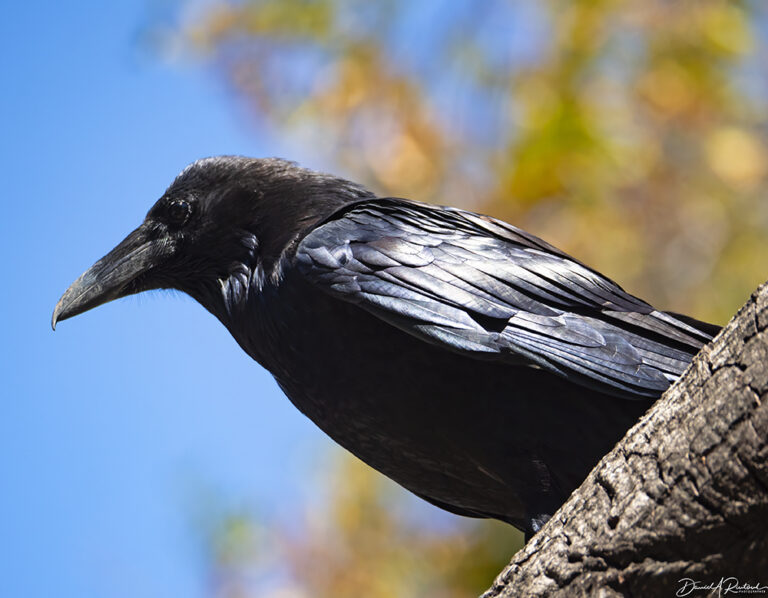
Another fine corvid, the Common Raven (Corvus corax) is expanding its range in California; when I was in graduate school in the 1970s, this species was quite rare outside of the higher mountain ranges (e.g. Sierra Nevada, Siskiyous, etc.) Now they are abundant in central California, and regularly found at lower elevations. Recent DNA studies indicate that the California population is a distinct population, although they interbreed quite freely with birds from the north and east. It is thought that this is an example of “reverse speciation”, where formerly isolated populations/subspecies are now in contact with each other and are in the process of mixing up their genes again. Click here for larger image.
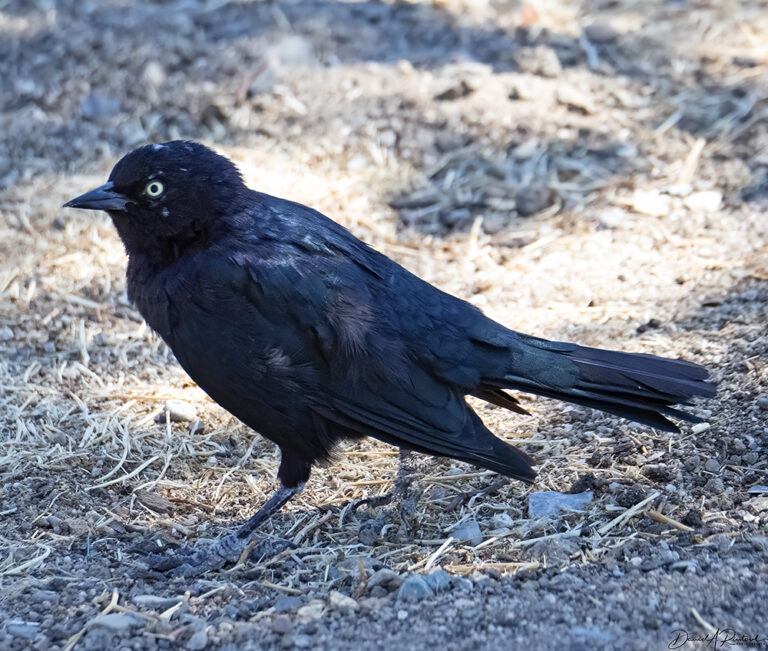
Another western bird that I enjoyed during my grad school years is the Brewer’s Blackbird (Euphagus cyanocephalus). This is a male, distinguished by the pale iris. Additionally, this is another bird that acclimates very well to people in picnic areas, becoming very accomplished snack-stealers themselves. Click here for larger image.
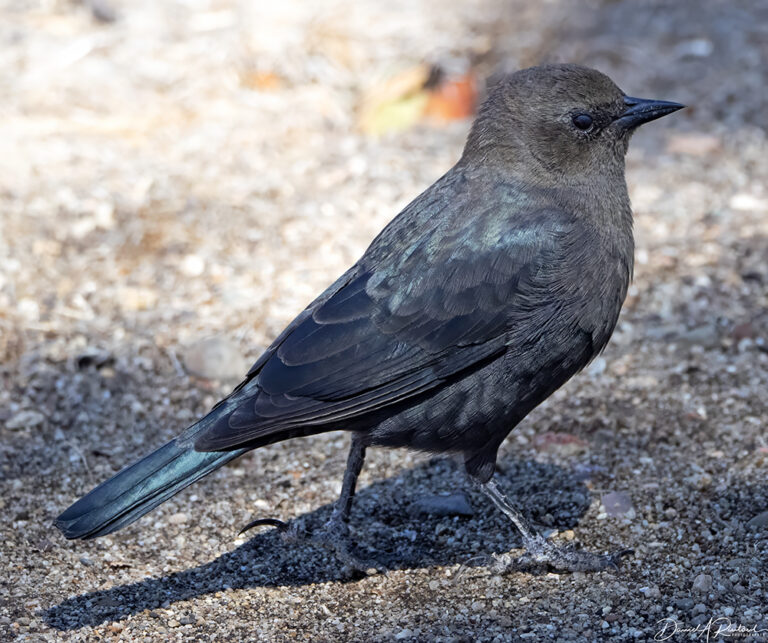
The female Brewer’s Blackbird has a dark eye, but still some of the iridescence that makes the male so attractive (and hard to photograph well). Click here for larger image.
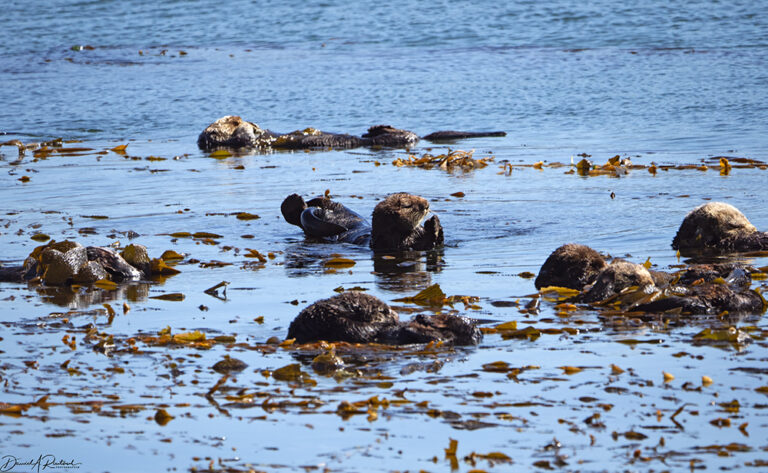
After leaving Monterey I went down to visit my son and daughter-in-law in Paso Robles, officially El Paso de Robles, or Pass of the Oaks, a name that further recognizes the California Live Oak. We took a day to go over to nearby Morro Bay, where the Sea Otters (Enhydra lutris) were apparently offering up thoughts and prayers. At least they look cute when engaged in this universally useless activity. Click here for larger image.

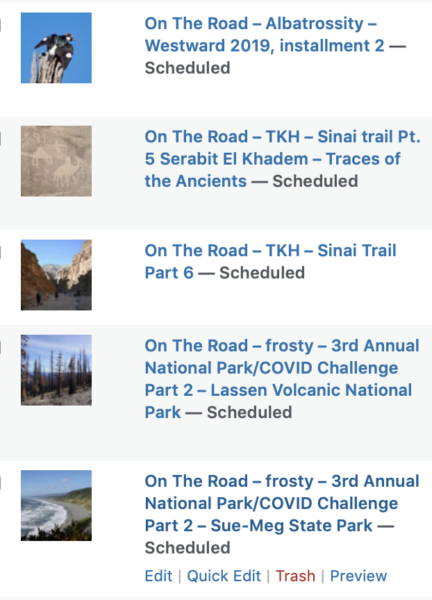
OzarkHillbilly
You said Acorn Woodpecker and my mind went straight to 700 pounds of acorns found stuffed by woodpeckers inside walls of California home.
TKH
That quail is one pretty bird!
Donatellonerd
the quail picture (and the quail) are gorgeous (also the nuttal’s woodpecker), and i appreciated the last sentence (excluding Click for…). yes the sea otters are cute. and to repeat (I think) that working on Monday mornings is a pleasure because I get to wait for these posts (Paris time)
Manyakitty
BIRB
SteveinPHX
Thank you for the photos and your story and thank you Ozark for the reminder about that acorn story!
raven
Ah, Montaña de Oro, we once camped there! Speaking of sea otters, we were sea kayaking on Orcas Island and the guide told us if we looked at the sea otters out of the corner of our eye they would stay up but if we looked directly at them they would dive under water!!! They did.
Princess
I don’t know birds but I do know Latin. Nuttallii and Nuttalli both are the genetics formed of the word Nuttall — so they mean Nuttall’s, right? The first is formed from a nominative Nuttallius, the second from Nuttallus. The ending on the first form -ius makes is sound like an adjective rather than a noun, which the second is. So we have “Dryobates of the Nuttallian type” versus “Nuttall’s Pica”.
Rob
The only pelagic trip I ever signed up for (out of Ocean City, Maryland), was cancelled due to weather. Since that was in the 90s, I obviously don’t have that as a priority birding activity. Ocean City isn’t that far from the DC area, so maaaaybe I’ll sign up for one this year?
The Mountain Quail photo is stunning; kudos to your friend. I would love to see that species some day; I’ve missed it every time I’ve been to California.
frosty
Acorn Woodpeckers are one of my favorites too. As is the landscape of the Central Coast. If I had lived there in my California days I might not have left!
Albatrossity
@Princess: Thanks for that; my Latin education is too far in the past for me to even remember any of that. But I still have the question. Why? Why are there two forms of a specific epithet which basically mean the same thing? Did some taxonomists prefer one over the other, so it would depend on who did the naming? I just don’t get it!
Thanks again!
pluky
Twenty-five foot waves on Monterey Bay, sounds like situation normal to me. As a youngling, my father was stationed at Fort Ord. In the orientation post-arrival we were told with much emphasis do not even wade in the surf on the other side of the dunes from our housing. A rogue wave can take a six inch wash to a four foot one with no warning. The subsequent rip will then carry one far offshore into water way too cold for safety.
All that aside, the picture of the golden dunes remind me that this area is easily the most beautiful place I lived in a seriously peripatetic childhood.
Eyeroller
@Albatrossity: It’s entirely possible that Princess knows Latin better than the taxonomists who named the two species, particularly in the case of the woodpecker. It’s fairly arbitrary to begin with and we are also putting Latin declensions onto non-Latin proper names all the time, so it seems fairly haphazard to me.
Elizabird
@OzarkHillbilly And then there is the non-woodpecker story from the great humorist Mark Twain, “What Stumped the Blue Jays…”
Albatrossity
@Eyeroller:
That has the ring of truth. I did some poking around and found that both of these species were named in the 1830s, 1834 for the woodpecker and 1837 for the magpie. There was also this tidbit in the Birds of the World account for the magpie: “This species was named by John James Audubon in 1837 (as Corvus nutallii, corrected the following year to nuttalli) in honor of the ornithologist Thomas Nuttall, who collected the first specimen near Santa Barbara, California.”
Corrected… That would imply 1) that Audubon was not a Latin scholar, and 2) that the “nuttallii” epithet is incorrect. The account for the woodpecker says: “This woodpecker named in 1843 by William Gambel for his mentor, the famous British naturalist Thomas Nuttall”. Gambel was no Latin scholar either, it appears, but if one was “corrected”, why not the other?
Parenthetically, up until 2011 or so, publication of a new species description for a plant or fungal species required a paragraph IN LATIN describing the species. The rest of the article could be written in the language of the journal, but they all had a Latin “diagnosis” or description included. So even if the taxonomists were ignorant of Latin, they had to hire a Latin scholar every time they described a new species!
Citizen Dave
Beautiful photos as always. The quail appears to have prominent feather antennae (?)
oldster
A lot of acorns get worms and grubs in them. So, those clever birds are storing up a double snack for themselves — maybe it’s delicious mealy starch on the menu, or maybe it’s fatty, proteinaceous grub. Win-win!
StringOnAStick
@pluky: I had some early childhood years near Paso Robels, and the tawny grass in rolling slopes plus coast live oaks is just so aesthetically pleasing! Gorgeous, evocative photo.
Mountain quail apparently exist not too far from our current home in central Oregon, but their low numbers and cautious nature make them tough to see, so seeing this photo is magical. We have lots of CA quail, and I’ve planted enough cover for them in our backyard that I don’t see them as often unless I’m outside and hear their calls. We had a few inches of snow on too of the wooden fence recently, and they tend to fly up to the fence, perch briefly and then fly down into the next yard on their list; the whole fence line had “quail divots” in the snow. One of my favourite birds so I was happy to see it!
munira
The mountain quail is a beautiful bird. Thanks for posting the photo.
BigJimSlade
I chased some quail off the fire road (Temescal Ridge Trail) I was mountain biking on yesterday. I was coming up on them and, knowing they were trying to avoid me, telling them that they were going to have to run faster than that. They understood and flew off to the side.
I’m not sure which variety lives in the Santa Monica Mountains, but I see them every once in a while. And, yes, they are usually more secretive and off in the scrubby bushes. Not as easy to spot as the crows, turkey vultures, the occasional hawks or the ubiquitous, but handsome, LGJs (though these are actually medium-sized, not “little” as in sparrow-sized).
cope
Wonderful pictures and story as always, thank you.
The picture of the mountain quail prompted me to go back through my pictures and find the ones I took of a quail behind our house here in Western CO last spring. After looking at them, I’m pretty sure it was a mountain quail though the angle from which I took my shots makes it appear the bird has only a single protrusion from its head.
Thanks again, a good start to the week.
way2blue
Albatrossity—the driveway & lawn of my parents’ house was bordered with juniper bushes that hosted a quail family. Loved to see the little ones chasing after their mom. I live just a short mile away, but only see (California) quail when hiking trails in the adjacent Santa Cruz Mtns. Cottontail rabbits too…
Albatrossity
@cope: Probably not Mountain Quail; those are pretty much confined to the west coast. I don’t think there are any extralimital records, and certainly none for CO. I’m betting on Gambel’s Quail, a species that is abundant in the Grand Junction area
stinger
Love the pious otter!
cope
@Albatrossity: Thanks for the correction. Comparing my pictures with your Mountain Quail, I see the differences and the much better match to the Gambel’s Quail image you provided.
Jim Appleton
Nice to see these.
In maybe 1963 or early ’64, I was a wee child on the shoulders of a long forgotten family friend, in Monterey to see the monarch butterflies, when a condor flew overhead, maybe 50 feet. I still vividly recall the sight, and the reactions of maybe a dozen souls nearby.
Those otters, I’m told, are feeding, some of them (including the one closest) using a rock laying on solar plexus to smash open clams.